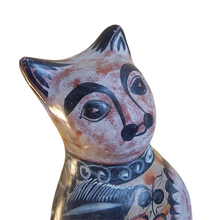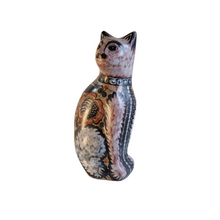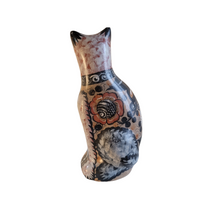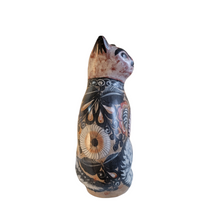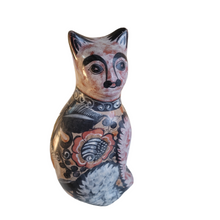
Tonalá (Spanish pronunciation: [tonaˈla]) is a city and municipality within the Guadalajara Metropolitan Area in the state of Jalisco in Mexico. ... It is best known as a major handcrafts center for Jalisco, especially pottery.
Below is some information from “The Ceramics of Tonala: Legacy of a Thousand Years” - Exhibit at Colorado College:
The ceramic production in Tonalá, known as the authentic mestizo ceramic is symbolic of Mexico’s identity. Made of burnished clay or scented clay, these artistic objects are created for ordinary and decorative use. The tradition comes from the Tonalteca group, which used clay to produce polished forms. The first designs of these ceramics were inspired by forms found in nature such as vegetables and roots.
The bright hues used for burnishing the objects originated from the powdered colorful and scented clay found in Mexican soil. During colonial times, the production of pottery incorporated decoration techniques brought by the Augustinian missionaries in the 17th century. The missionaries introduced lacquer that began to be used along with the original burnishing method. Tonalá ceramics became an important part of the decoration of wealthy houses in Spain, for their fragrance, color and design. They were considered luxury objects brought from the Americas.
Today, the artisans of the Valley of Tonalá still use the burnishing techniques of their pre-Hispanic ancestors, fused with colonial styles that resulted in sophisticated ceramics that became an important part of Mexico’s artistic traditions.
The four most common finishing methods used in Tonalá are bruñido (burnished) clay, bandera (flag) clay, petatillo (woven straw) clay, and canelo (cinnamon) clay.
Another lasting continuity of tradition is the imagery that spans pre-Hispanic times to contemporary work. For example, the Tonalá artistic tradition depicts the nahual as a large, jaguar-like cat with a smiling face. The nahual is a shamanic shape shifter who moves between the human and animal worlds.
Now emblematic of the region, the flor de Tonalá (Tonalá flower) appeared at the start of the 20th century with an oval center surrounded by petals that form a scalloped floral design.
Period: Early to mid 20th century
Condition: Excellent vintage condition
Measures 14 inches tall
Free shipping within the Continental US










